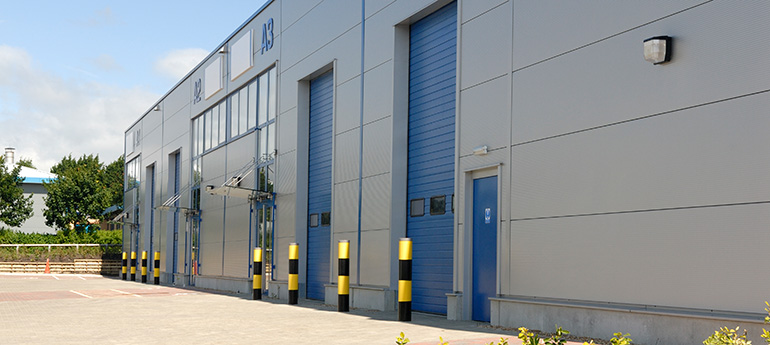Investors shifting to industrial as office disruption continues

What's driving the boost in Industrial investment?
The industrial sector continues its reign as a top asset class for investors, with new research showing just how wide the appeal is. As the office sector continues to face work-from-home challenges and rising vacancy rates, many investors are looking at industrial assets as a preferred option. Those dynamics, coupled with the higher cost of tenant build outs and capital expenditures in office properties, make industrial a clear choice for many investors.
Principal
Head of Industrial Capital Markets
[email protected]
+1 312.273.9486
Industrial continues to rise, outpacing office, retail and hotels as a preferred investment
The industrial sector continues to outperform other asset classes, with new research from CoStar showing warehouse, distribution and logistics properties now comprising almost one-quarter of all commercial property sales transactions. This is an increase from the average of 14% seen since 2007.
While changing consumer buying patterns and the correlating surge in e-commerce adoption are key factors in industrial’s strong performance, there are other forces at work. Since 2015, investors have been shifting away from office properties due to the higher exposure to capital expenditures and other factors, according to CoStar. Most recently, the work-from-home disruption in the office sector has pushed office vacancy rates higher and exacerbated the shift in investment towards the more stable industrial sector. According to CoStar, office sales now account for just 17% of total transaction volume, down from a 15-year average of 29%.
According to Avison Young research, the national office vacancy rate at Q1 2023 was 18.3%. Tech hubs such as San Francisco (24.4%) and Austin (22.1%) have been the hardest hit due to recent job reductions by large employers. Core urban markets such as Chicago (23.0%) and Manhattan (15.0%) are also seeing the impact of lower occupancy and a diminished outlook for the office sector.

Conversely, the national industrial vacancy rate is around 4%, with lower rates seen in key markets. The lower vacancy levels are notable given the steady flow of new construction since 2010 and the accelerated demand for new space during the pandemic. Deliveries in 2022 reached 132.3 msf, a 30.8% YOY increase. Despite all the new construction, the demand for more efficient space and the push to add e-commerce facilities close to large population centers is expected to kept construction flowing. It also creates a large new pool of high-quality assets for investors.
Industrial tops for YOY investment volume levels
The industrial sector has also shown its resilience over the past six months, as interest rate increases and market uncertainty drove many investors to the sidelines. Preliminary Q1 2023 research by MSCI/Real Capital Analytics shows that the industrial sector fared the best in yearly volume change when compared with the office and multifamily sectors. The industrial sector recorded a 46.4% decrease in yearly sales volume compared with a 69.1% decrease for office and a 60.7% decrease for multifamily.
Total property sales volume for the last four quarters, ending with Q1 2023, reached $245.8 billion for multifamily; $102.5 billion for industrial and $89.3 billion for office. The industrial sector recorded a 9% yearly increase in average price per square foot, to $137, while the office sector recorded a decline of 31.1%. The multifamily sector recorded an 8.8% yearly decline in the average price per unit to $206,460. Average cap rates during Q1 2023 were 5.1% for multifamily, 6.0% for industrial and 7.1% for office properties.
High cost of office ownership squeezing profits
Office assets have historically been the dominant property investment type, accounting for 40% to 60% of the total investment sales volume before the Great Recession. According to Preqin data, returns for core and core-plus equity placed in the office sector between 2000 and 2007 did not meet fund targets in many instances. This was due to ballooning tenant improvement costs and the ongoing cost of capital expenditures required to maintain aging office buildings. As those expenditures began eating into investor profits, many investors pivoted toward more predictable cash flow in industrial and other asset classes.
Industrial’s rise to a favored asset class picked up steam around 2015 when capital sources began investing in this sector en masse due to the stable triple net lease structure and the sector’s long-term growth projections.
The growth of e-commerce also provided developers with opportunities to construct more sizable warehouses that are more suited for institutional investors. While typical industrial facilities were around 250,000 square feet before the mid-2000s, new warehouse and distribution centers often reach near one million square feet. This size allows acquisition teams to place more capital into each investment and reach scale more quickly than with smaller properties. Large portfolios sales soon followed, with investors bundling multiple assets across several markets to gain a foothold or expand their presence in this sector.
Looking ahead, the industrial sector should continue to rise to the top of investors’ wish lists. Projections for e-commerce growth, reshoring of U.S. businesses, supply chain modernization, and manufacturing output are all positive and will lead to an expanded pool of modern assets. And, the sector's predictable cash flow and lower capital expenditure needs may pull away more investors from capital-intensive office buildings.
Sources: Commercial Edge, CoStar, MSCI Real Capital Analytics
